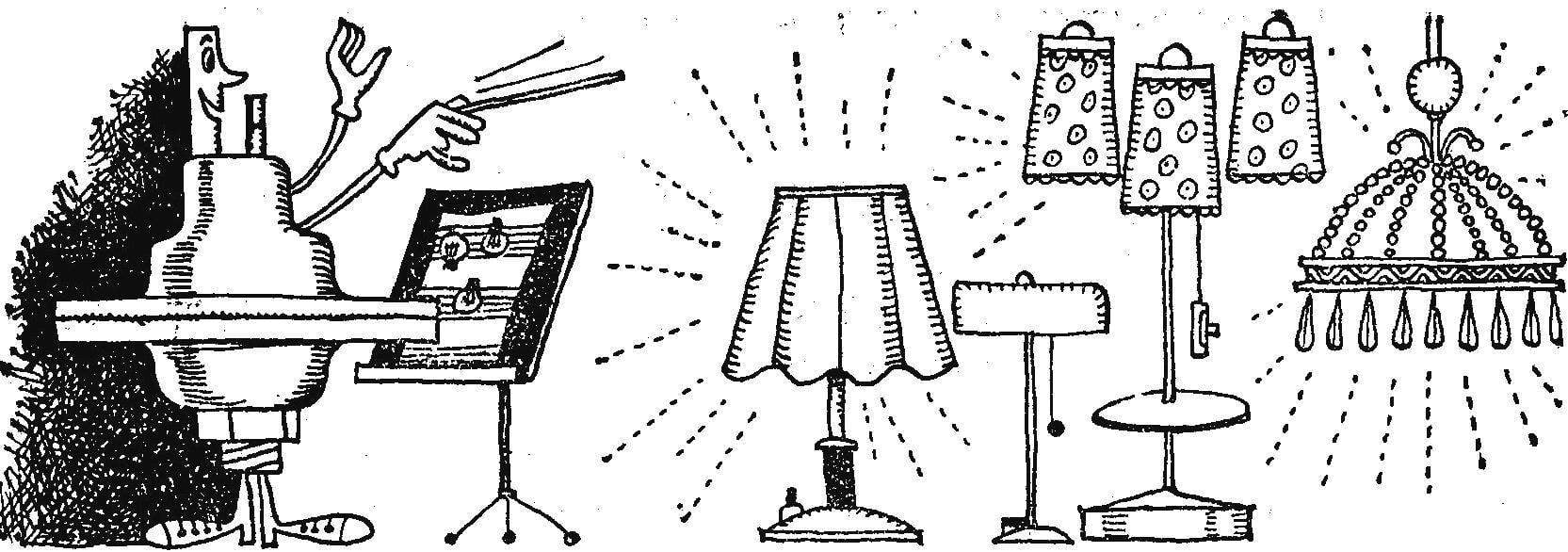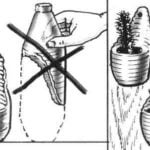 If you need to smoothly adjust the light in the floor lamp, chandelier or table lamp, usually used autotransformer. However, this controller is bulky and low economical to exploit at.
If you need to smoothly adjust the light in the floor lamp, chandelier or table lamp, usually used autotransformer. However, this controller is bulky and low economical to exploit at.
You can do otherwise: in series with the lamp to enable the high-speed device, which is 100 times a second would include on and off the lamp synchronously with the voltage of the alternating current. If it will fire at the beginning and end of each half-cycle, the lamp will burn at full capacity. If there will be some constant delay at the beginning and end of each half-cycle, the power consumed by the lamp decreases, the light will weaken. Changing the delay, we can adjust the intensity of the lamp. This principle is called phase. Quick switch-the switch is a thyristor.
To control an incandescent lamp industry produces special devices — sequential thyristor regulators, for example, the controller CP is 0.3.
About it it is told in the journal Svetotekhnika No. 4, 1974.
To adjust the lighting using the conventional autotransformer. But if your apartment is equipped with fluorescent lamps, adjust them uncomfortable lighting: 1 when the voltage drops by 15 — 20% of the lamps burn unstable and even extinguished. In this case indispensable thyristor dimmers. But to include them in series with the fluorescent lamp it is impossible. For heating the cathodes of the lamps in this case we have to use special transformers, whose output current gradually increases if the total current through the lamp decreases.
In parallel, fluorescent lamp is the starter include thyristor power regulator (see diagram), allowing a wide range to adjust its intensity. The thyristor here plays the role of a high-speed switch-switch. During the passage of each half-wave of the current it closes and short-circuits the lamp. Through her period the discharge current flows only at the beginning of the half-wave, and the remaining part passes through the thyristor and the cathode of the lamp. The smaller portion of each half-wave current passes through the lamp, the weaker the light that it emits. On the other hand, the (more pause current through the lamp, the more heated cathodes: at this time, current passes through the cathodes and thyristor. Consequently, thyristor controllers can be used without an additional transformer for heating the cathodes. 1 Akai controller works reliably with a fluorescent lamp of any type, practically does not create interference (choke ballast and capacitors C1, C2 perform the role of a high-pass filter).

B1 — mains switch DR1 — two-piece ballast inductor being an inductive ballast for fluorescent lamp L1. Capacitor C1 reduces the level of interference and S2 facilitates re-ignition of the lamp when it changes current direction with a frequency of 50 Hz. CT1 — starter glow discharge at a voltage of 220 V or 127 V (SK-220 or SK-127). Switch B2 serves to switch off the starter and connect the thyristor regulator in parallel with the lamp. The thyristor T1 is connected to the chain, R1, R2, C3 in parallel, included in the diagonal of the rectifier bridge D1 — D4. As soon as the voltage on the capacitor C3 reaches the threshold dynistor D5, the latter opens and triggers the thyristor, It works with frequency 100 Hz synchronous with the mains voltage, samarajiva on some of the half cycle of the lamp. The time of switching is set by using the variable resistor R2.
The resistance of resistor R1 is chosen such that when the left position according to the diagram of the engine 112, the power consumed by the lamp, was somewhat less than the nominal. If the resistance of resistor 112 is too large, the dynistor can begin to operate with a frequency of 50 Hz. This lamp will operate on rectified current and she sharply (abruptly) increases the depth of the pulsations of the light flux. Of the resistors R1 and R2 depend on the parameters of the lamp, the capacitance of the capacitor C2, the type of the ballast, the level of fluctuations in mains voltage and threshold characteristics used dynistor. Approximate resistance values of these resistors for the most common types of lamps and ballast devices with no additional windings for heating the cathodes are summarized in the table. In practice, however, the values of these resistors may differ from those listed in the table several times. Resistance R1, R2, select from the condition that throughout the adjustment range of the lamp is not switched mode rectifier and the minimum power in the discharge is not extinguished completely.

The knob of the variable resistor R2 is recommended to connect the switch B2, which is at maximum power will disconnect the regulator from the lamp and connect it to the starter.
Leave the starter should not be permanently enabled: occurs when it is activated, the voltage pulses can cause the breakdown of the diodes in the rectifier bridge.
The thyristor T1 must correspond to the mains voltage: КУ202Н — 220 and КУ202И — 127 V.
The regulator circuit can be mounted in the chandelier, floor lamp, wall lamp, night light. The device is made in the form of blocks included in the panel for the starter.
The lamps are equipped with thyristor controllers, there is a deep modulation of the luminous flux at a frequency of 100 Hz. Given this, choose lamps, phosphors which have a great afterglow, for example, L B. At the same time lamp LD and LDTS have phosphors with less afterglow.
There may be other modifications of such regulators. For example, you can make a scheme to manage simultaneously several fluorescent lamps using only one thyristor controller or use RGB controller. In this scheme, to each lamp, connect your rectifier bridge, and diagonally commute one thyristor.
TENANTS V., candidate of technical Sciences, V. PISAREV



